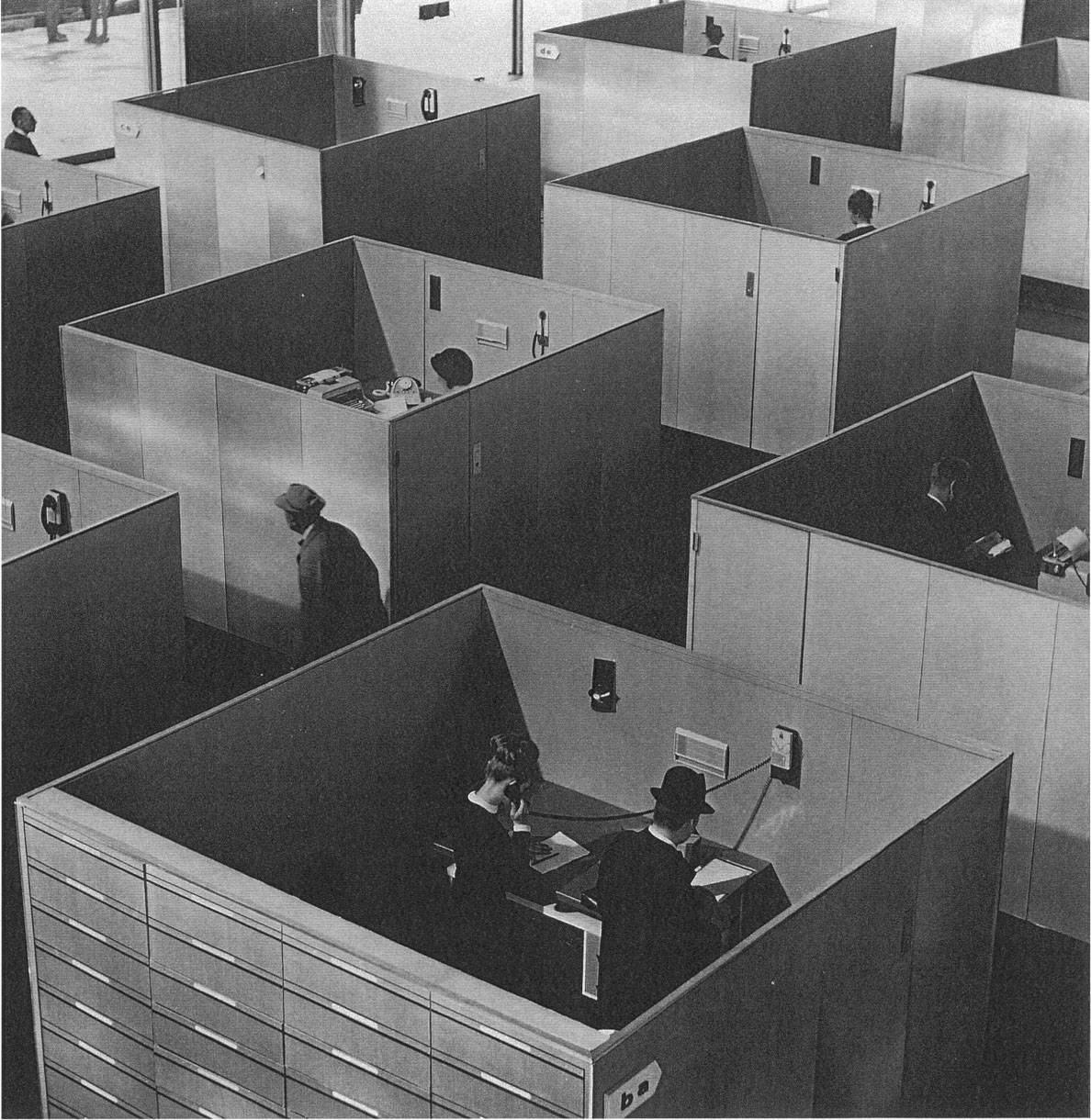February 8, 2019
A worthwhile workplace trends list, permanent beta, nudge nudge, think think and some other stuff
 If there’s just one thing that makes my heart sink more precipitously than the word ‘trends’, it’s when it’s preceded by the words Top and Ten. So it’s nice to have been surprised by this list of workplace trends that displays the wherewithal and insight to call on those people in the sector who might have something informed and interesting to say about where it all might be headed this year. Don’t be put off by the headline, even if you’re as jaded as I am.
If there’s just one thing that makes my heart sink more precipitously than the word ‘trends’, it’s when it’s preceded by the words Top and Ten. So it’s nice to have been surprised by this list of workplace trends that displays the wherewithal and insight to call on those people in the sector who might have something informed and interesting to say about where it all might be headed this year. Don’t be put off by the headline, even if you’re as jaded as I am.
One of the experts called on to deliver a prognosis was the ubiquitous Neil Usher, who also expanded on some of the themes raised in the list in his most recent blog, seasoned with his own cynicism about the annual identification of new trends or relabelling of old trends, in this case wellbeing, biophilia and experience.
Experience is therefore not a universal or objective idea. Two people are likely to experience the exact same workplace and what occurs within it entirely differently. As with wellbeing, much of course has to do with other people, and their behaviour, values and choices. Experience is fleeting, transitory, and subject to revision over time. We forget, and so tell ourselves changing stories.
For those of us immersed in this stuff, we can even sometimes feel the pull of cynicism when faced with an informed challenge to false narratives. It’s a feeling I had while reading this piece in The Spectator, which is refreshing in many ways but concludes with making unnuanced statements about the benefits of flexible working. Smarter working might well be ‘a fantastic way to boost productivity, [encourage] diversity in the workplace as well as [promote] health and wellbeing among employees’. But then again it might not.
Chasing the workplace chimera
Pulling at this particular thread in an admirably nuanced way was Rob Harris in this piece, also to be published in the new issue of Work&Place and the subject of a debate at the upcoming Workplace Trends Spring Summit.
 One of the key problems with the workplace profession is that there is an underlying sense that a perfect workplace is waiting to be discovered, and that if we can only correct this or that issue, then we will move ‘forward’, make progress. This is, of course, fantastical. A chimera. The crux of [Frank] Duffy’s approach was that there will always be a trade-off between the organisation and the individual, yet most research addresses only one side of this equation. Moreover, no matter how well-planned and responsive the work environment is, if individuals are not comfortable, or aligned, with the organisation, their effectiveness will suffer.
One of the key problems with the workplace profession is that there is an underlying sense that a perfect workplace is waiting to be discovered, and that if we can only correct this or that issue, then we will move ‘forward’, make progress. This is, of course, fantastical. A chimera. The crux of [Frank] Duffy’s approach was that there will always be a trade-off between the organisation and the individual, yet most research addresses only one side of this equation. Moreover, no matter how well-planned and responsive the work environment is, if individuals are not comfortable, or aligned, with the organisation, their effectiveness will suffer.
In other words, work can be a bit shit even when we think we’ve ticked all the right boxes. And even if it isn’t, this is liable to change even when we have got it right for at least a while. The experience we have of work and the workplace is in a state of permanent beta, as Neil Usher would say. Life, in other words.
Or as David D’Souza put it in this excellent blog about the day-to-day challenges of leadership:
You don’t give someone a four/nine box model and away they go… You don’t just say ‘Embrace your autonomy’ and everything turns out fine. You wrestle with this stuff every single day. And if you are me you go home and replay each day in your head second guessing each decision you made and then still come in the next day trying to give people confidence that you know what you are doing. A constant balance of unpicking and stepping forward.
About ten years ago, we first became aware of one proposed way of meeting such challenges, which was to nudge people into behaving in specific and presumably beneficial ways. A new piece of research from McKinsey sets out to gauge the effectiveness of nudge units. It’s an interesting if largely uncritical piece based as it is on the experience of nudgers.
Blocking the iron fist
 Regardless of the modishness of this velvet glove, some organisations clearly prefer something more metallic. One of the most talked about workplace issues of the past couple of weeks has been the experience of a 22 year old from Manchester called Olivia Bland who was subject to what appears to be a needlessly belligerent interview for a job.
Regardless of the modishness of this velvet glove, some organisations clearly prefer something more metallic. One of the most talked about workplace issues of the past couple of weeks has been the experience of a 22 year old from Manchester called Olivia Bland who was subject to what appears to be a needlessly belligerent interview for a job.
Stefan Stern explores the power dynamics at play in these situations in this piece, but there may be other things to consider, according to this research which suggests that their own psychopathy, narcissism and other characteristics may compel interviewers to behave in ways that are designed to make applicants feel uncomfortable or intimidated. This can be counter productive or worse. In the case of Olivia Bland this involved her rejecting the job out of hand on Twitter, setting off the now commonplace social media storm as a result.
It may seem obvious that behaving like a bully to a job applicant is not a good idea, especially when there are mismatched power dynamic involved. But firms are often impervious to the bleedin’ obvious, according to this piece from MIT SMR. The author suggests that an over reliance on analytics, for example, can blind managers to things that should be apparent with a moment’s thought, such as meeting new hires when they begin work.
So, maybe there’s something in Robert Frost’s idea that “the brain is a wonderful organ; it starts working the moment you get up in the morning and does not stop until you get into the office.”
It would certainly explain the story of this call to a tech support line. Nothing good can come from a call that starts with the words: “What depth of water can the computer operate in?”













